|
Books Should Be Free Loyal Books Free Public Domain Audiobooks & eBook Downloads |
|
|
Books Should Be Free Loyal Books Free Public Domain Audiobooks & eBook Downloads |
|
Fiction |
|---|
|
Book type:
Sort by:
View by:
|
By: Mary Roberts Rinehart (1876-1958) | |
|---|---|
 The Man in Lower Ten
The Man in Lower Ten
Someone had to take the bank notes to Pittsburgh and take a statement from John Gilmore confirming that they were indeed forged. It was McKnight's turn to go, but he was bagging off because he wanted to spend the weekend visiting Alison West in Richmond. And so his law partner, Lawrence Blakeley, is left with no choice but to make the trip himself. All goes well at first, but on the train home, Blakeley wakes to find that the notes, along with his clothes, are missing from his sleeping berth. It was an eventful night. In addition to the theft, there's been a murder in the berth across, and when the weapon is found under Blakeley's pillow, he becomes one of the prime suspects. | |
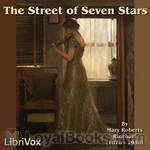 The Street of Seven Stars
The Street of Seven Stars
Published in 1914, this novel tells the story of Harmony Wells, an innocent and beautiful American in Austria to study violin. Harmony has talent and she dreams of a career in music. After her friends run out of money and return to the States, Harmony stays on in hopes of earning enough money to continue her lessons. Along the way, she meets Peter Byrne, an American doctor in Vienna following his dream to study surgery. Peter is already watching over an orphan boy in a local hospital and now he takes it upon himself to protect young Harmony from the unsavory side of life in the big city... | |
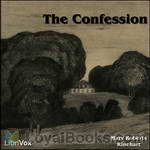 The Confession
The Confession
Mary Roberts Rinehart is claimed to have invented the "Had I but known" mystery genre. When Agnes Blakiston rented the old parsonage at Miss Emily's request she soon came to regret it. Was the house haunted? Did Miss Emily have a secret so terrible she would rather die than reveal it? To find the answers you will need to listen. | |
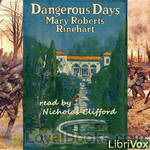 Dangerous Days
Dangerous Days
Dangerous Days opens in a still neutral America, though within a year the country will have joined the European alliance against the Central Powers in the first world war. Clayton Spencer, a successful industrialist and owner of a munitions plant, finds himself facing several problems: not only anarchism and German sabotage, but also the prospect of a deteriorating marriage, and of a son who all too often shares his mother's frivolous and essentially self-concerned point of view. How far will America's entry into the war change such views? What will it mean for Spencer, for his family, and for his business? | |
 When a Man Marries
When a Man Marries
A divorced playboy hosts a dinner party complete with a stand in wife to placate his aunt who financially supports him. When his chef is hospitalized with smallpox symptoms, the fun begins. Throw in an ex-wife, a mystery, and a little romance and you have a comedy of side splitting proportions. - | |
 Tish
Tish
The story of three "middle aged ladies". Follow along as they have all sorts of adventures. | |
 More Tish
More Tish
Mary Roberts Rinehart wrote 6 books about the elderly Letitia (Tish) Carberry and the escapades she gets her elderly lady cronies into. The series led to a 1942 movie with Marjorie Main. This particular book, the third in the series, was written after Mary's stint as a war correspondent in Belgium during the first World War. | |
By: Mary T. Waggaman (1846-1931) | |
|---|---|
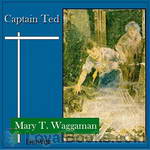 Captain Ted
Captain Ted
When tragedy hits his family, in the form of a sudden illness to his father, young Teddy Thornton is forced to leave school and find work to help support his family. Without his realization he is thrown into a world of crime and counterfeiting. Will he do the right thing, or will he unwittingly be drawn down the wrong path? And will the mystery of Heron Hall be solved? | |
By: Mary Webb (1881-1927) | |
|---|---|
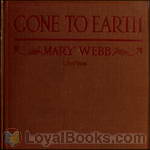 Gone To Earth
Gone To Earth
“Gone to Earth” is the cry of fox hunters as the fox takes to its den and they lose the chase. Here, Mary Webb tells the story of Hazel Woodus whose understanding of her half tame fox cub contrasts with her misunderstanding of humanity. She is pursued by two very different men, a Gentleman Farmer and the local Minister. Mary Webb’s writing is sometimes compared to that of Thomas Hardy, her descriptions of nature are vivid and her view of love and life is touched with tragedy. She wrote this book in 1917 and it is set in the borderlands of rural Shropshire. | |
By: Mary Wollstonecraft (1759-1797) | |
|---|---|
 Maria: or, the Wrongs of Woman
Maria: or, the Wrongs of Woman
Maria: or, The Wrongs of Woman is Mary Wollstonecraft's unfinished novelistic sequel to her revolutionary political treatise A Vindication of the Rights of Woman. It was published posthumously in 1798 by her husband, William Godwin. Maria revolves around the story of a woman imprisoned in an insane asylum by her husband, and focuses on the societal rather than the individual "wrongs of woman". Publicised at the same time as Wollstonecraft's memoirs, both were considered scandalous. Not until the 20th century was the novel considered an important historical and feminist work. | |
 Mary: A Fiction
Mary: A Fiction
Eliza, Mary's mother, is obsessed with novels, rarely considers anyone but herself, and favours Mary's brother. She neglects her daughter, who educates herself using only books and the natural world. Ignored by her family, Mary devotes much of her time to charity. When her brother suddenly dies, leaving Mary heir to the family's fortune, her mother finally takes an interest in her; she is taught "accomplishments", such as dancing, that will attract suitors. However, Mary's mother soon sickens and requests on her deathbed that Mary wed Charles, a wealthy man she has never met. Stunned and unable to refuse, Mary agrees. Immediately after the ceremony, Charles departs for the Continent. | |
By: Mary Wollstonecraft Shelley | |
|---|---|
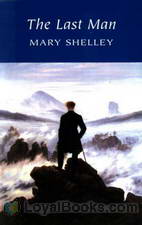 The Last Man
The Last Man
The Last Man is an early post-apocalyptic science fiction novel by Mary Shelley, which was first published in 1826. The book tells of a future world that has been ravaged by a plague. The plague gradually kills off all people. Lionel Verney, central character, son of a nobleman who gambled himself into poverty, finds himself immune after being attacked by an infected “negro,” and copes with a civilization that is gradually dying out around him. | |
 Mathilda
Mathilda
The finished draft of a short novel by Mary Shelley. Its adult theme, concerning a father’s incestuous love for his daughter and its consequences, meant that the manuscript was suppressed by Shelley’s own father, and not published until 1959, more than a hundred years after her death. Summary by Cori Samuel | |
 Tales and Stories
Tales and Stories
While Mary Shelley will most likely always be known for her enduring classic of mad science Frankenstein, this collection intends to show the sheer breath and quality of her writing beyond the creation for which she is most known. Many of these stories are told in an atmospheric gothic fiction vein, full of eerie old castles, strange revelations and family secrets. But we also have stories of the supernatural and even science fiction to contend with. Shelley was a true literary master and should be recognized for her contributions to literature beyond her most famous work. - Summary by Ben Tucker | |
 Lodore
Lodore
The author of Frankenstein returns with her take on an Austen novel. The mother is proud, the father has many vices, yet the aristocratic name must be kept. Even more so when lord Lodore dies. His wife and daughter find themselves without protection. This novel is conserned with gender equality, education and social justice. - Summary by Stav Nisser. | |
 Falkner
Falkner
Falkner is the last novel by Mary Shelley, best known as the author of Frankenstein and The Last Man. It tells the impossible love story between Elizabeth Raby and Gerald Neville. She is an orphan, raised by a tyrannical father figure. The man who raised her drove Gerald Neville's mother to her death years before. Can these men reconcile for the woman both love and start anew? Or would Elizabeth have to give up her happiness? Mary Shelley considered this her best novel. You may read it and see what you think. - Summary by Stav Nisser and Wikipedia. | |
 Frankenstein: or, the Modern Prometheus (Version 4)
Frankenstein: or, the Modern Prometheus (Version 4)
This is a classic horror story, and one of the earliest examples of science fiction. The main characters are Dr. Frankenstein and his creation, the daemon. Shelley called the scientist a "pale student of unhallowed arts" and his creation a "hideous phantasm of a man." This story is not only delightfully frightful, but arguably represents one of the clearest criticisms of science during a time when, like the daemon, it was leaving its own infancy and, like Dr. Frankenstein, testing its ethical boundaries... | |
 Frankenstein, or The Modern Prometheus (Edition 1831)
Frankenstein, or The Modern Prometheus (Edition 1831)
A mentally unstable genius, Victor Frankenstein, inspired by the dreams of ancient alchemists and empowered by modern science, creates a humanoid but fails to nurture and educate it after it comes to life. It wanders alone into a hostile world, where fear of its size and ugliness subjects it to violence and ostracism, which in time it learns to blame upon its maker. As compensation for its suffering, it demands that he create a companion with whom to share its outcast life. Moved by the creature's account of its sufferings, the scientist agrees, but a long period of procrastination awakens doubts that ultimately cause him to break his promise... | |
By: Matthew Lewis | |
|---|---|
 The Monk: A Romance
The Monk: A Romance
Matthew Gregory Lewis's The Monk: A Romance is a story of frustrated and unrequited desire between mentor and pupil mixed with elements of the supernatural. It includes several subplots: rape, torture and incest. It is the old story of the forces of good versus the forces of evil, except that in this one evil comes out ahead. When The Monk was first published in 1795, it was received well by readers and reviewers causing a second edition to be printed the following year. But by the third year, there began a growing criticism of the book and of Lewis mostly on the basis of immorality... | |
 Adelgitha; or, The Fruits of a Single Error
Adelgitha; or, The Fruits of a Single Error
The second original tragedy written by Gothic writer Matthew Lewis, Adelgitha; or, The Fruits of a Single Error is a markedly more serious affair than his melodramatic output, dealing as it does with a fallen woman who is mercilessly blackmailed by a ruthless tyrant when she spurns his advances. Set in Otranto during the High Middle Ages, and featuring fictionalized depictions of historical rulers Robert Guiscard and Michael Ducas , Adelgitha is an archetypal Gothic drama that, while not especially refined or meritorious in terms of quality, still manages to thrill in that deliciously overwrought way that Lewis knew how to sell... | |
 Castle Spectre
Castle Spectre
Written by Gothic writer Matthew Lewis, whose novel The Monk is one of the most enduring Gothic works from the eighteenth century, The Castle Spectre is one of Lewis' earliest forays into drama, and a strong indication of his talents as a controversial and frightening entertainer. Set in medieval Conway, Wales, the play is filled with every delicious Gothic trope imaginable: a menacing castle, a villainous nobleman hiding terrible secrets, a virginal damsel in distress, an heroic lover trying to save her, several comedic supporting characters, and, yes, the presence of a ghost... | |
By: Maturin Murray Ballou | |
|---|---|
 The Sea-Witch
The Sea-Witch
Maturin Murray Ballou was the author of dozens of books, chiefly centered around his extensive sea travel. He was deputy navy-agent in the Boston Custom House and circumnavigated in 1882, collecting material for several travel accounts and various nautical romances, amongst which The Sea-Witch can be counted. | |
By: Maud Jean Franc | |
|---|---|
 Two Sides To Every Question: From A South Australian Standpoint
Two Sides To Every Question: From A South Australian Standpoint
'Two Sides to Every Question’: From a South Australian Standpoint is a meditation on poverty, wealth, and social aspiration set in the free settlement of Adelaide in pre-Federation Australia. The novel follows the lives of a cast of characters from different social classes as they negotiate the twists and turns in their respective fortunes. The newly-bereaved Alton family—an invalid widow and her two grown children, Tom and Nettie—sell their rural property and move to the slovenly back streets of the inner-city; they are determined to hold onto their dignity and values as they turn to earning a living for the first time... | |
By: Maud Lindsay (1874-1941) | |
|---|---|
 Story-teller
Story-teller
Are you a story teller? Almost all of us are, you know. Well, these 12 stories were written by Maud Lindsay to be told by someone who can weave the magic thread of speech into a performance that will hold the children spellbound. And we don't need to be perfect, just willing to tell a story; that is really all children ask, someone willing to tell a story. 8 of Librivox's Story tellers have volunteered to tell these enchanting tales (and sometimes sing the sweet little melodies that are included... | |
By: Maude L. Radford (1875-1934) | |
|---|---|
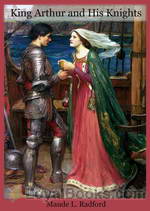 King Arthur and His Knights
King Arthur and His Knights
Published in 1903, King Arthur and His Knights by Maude L. Radford is an easy to read version of the Arthurian legends, made simple and interesting for children. Maude Lavinia Radford Warren was a Canadian born American who taught literature and composition at the University of Chicago between 1893-1907. Following the success of some of her books, she left teaching to take up writing as a full time career. She also served as a war correspondent for the New York Times magazine during WWI and contributed several remarkable features on the role of women in the conflict... | |
By: Maurice Henry Hewlett (1861-1923) | |
|---|---|
 Frey and his Wife
Frey and his Wife
Frey and his Wife is a Nordic Saga, but written in a saga style by a 20th Century Englishman. It tells the tale of Gunnar, a Norwegian wrongly accused of murder who flees across the mountains to the pagan forests of Sweden. There he meets 'Frey' a Norse god, and a young woman who has become his wife. Animosity develops between Frey and Gunnar over the local ritual of human sacrifice which leads to an interesting outcome. The tale develops themes of religion, idolatory, and love, set in the time when Christianity was starting to displace pagan religion in Scandinavia. (Kevin Green) | |
By: Maurice Leblanc (1864-1941) | |
|---|---|
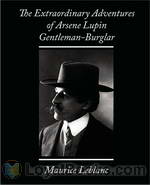 The Extraordinary Adventures of Arsène Lupin, Gentleman-Burglar
The Extraordinary Adventures of Arsène Lupin, Gentleman-Burglar
Two writers, famous in their own countries for creating immortal characters: Sir Arthur Conan Doyle in England and Maurice Leblanc in France. Their literary creations, Sherlock Holmes and Arsene Lupin are at two ends of the criminal spectrum. Holmes is a sleuth while Lupin is a burglar. When Maurice Leblanc introduces Sherlock Holmes in one of his Arsene Lupin stories, Conan Doyle is outraged. He sues Leblanc, who promptly changes the character's name to “Herlock Sholmes” and continues featuring... | |
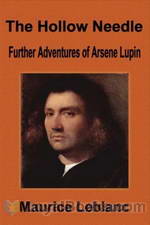 The Hollow Needle: Further Adventures of Arsène Lupin
The Hollow Needle: Further Adventures of Arsène Lupin
Arsène Lupin returns in a wonderful story of disguises, love, and of course treasure. Once again, Lupin crosses paths with the famous Holmlock Shears. But this time Arsène matches wits with Isidore Beautrelet, Sixth-form Schoolboy. Every step that Lupin takes has Beautrelet right on his heels. Has Lupin finally met his match? Will Beautrelet discover the secret of the Hollow Needle? And has the gentleman burglar met another match as well, one who will lead him away from his life of crime forever? | |
 The Eight Strokes of the Clock
The Eight Strokes of the Clock
The Eight Strokes of the Clock is a collection of eight short stories by Maurice Leblanc. The stories have his most famous creation, Arsène Lupin, gentleman-thief, as main character. The eight stories, even though independent, have a leading thread: Lupin, under the name of Serge Rénine, trying to conquer the heart of a young lady, travels with her, solving eight mysteries on the way. | |
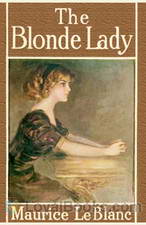 The Blonde Lady
The Blonde Lady
In “The Blonde Lady, being a record of the duel of wits between Arsène Lupin and the English detective” – original title “Arsène Lupin contre Herlock Sholmes” – the gentleman-burglar once more meets his enemy, the English detective Herlock Sholmes. If in the last story of “Arsène Lupin, gentleman-burglar” Sherlock Holmes arrives too late (the name was at a later date changed to Herlock Sholmes in reply to complaints and threats by Conan Doyle regarding copyrights), in the two stories that compose “The Blonde Lady” these two great intellects are bound in opposite directions... | |
 The Teeth of the Tiger
The Teeth of the Tiger
Maurice Leblanc delivers another Arsene Lupin adventure set in World War I. | |
 813
813
As usual, gentleman thief Arsene Lupin finds himself wrongfully accused of murder, and must find the real killer to clear his coloured name. | |
 The Confessions of Arsene Lupin
The Confessions of Arsene Lupin
A collection of nine stories - or confessions - of the celebrated gentleman thief Arsene Lupin | |
 The Crystal Stopper
The Crystal Stopper
During a burglary at the home of Deputy Daubrecq a crime is committed, and two accomplices of Arsène Lupin are arrested by the police. One is guilty of the crime, the other innocent, but both will be sentenced to death. Lupin seeks to deliver the victim of a miscarriage of justice, but struggles against Deputy Daubrecq's ruthless blackmailer, who has an incriminating document hidden in a crystal stopper. | |
 Arsène Lupin versus Herlock Sholmes
Arsène Lupin versus Herlock Sholmes
The story of an exciting test of wits between world-class thief Arsène Lupin and master detective Herlock Sholmes. Translated from the French. - Summary by Andy Harrington | |
By: Maurice Maeterlinck (1862-1949) | |
|---|---|
 Blue Bird for Children
Blue Bird for Children
One of the strongest pieces of imaginative writing for children that the past decade has produced and one of the most delicate and beautiful of all times, is "The Blue Bird," by Maurice Maeterlinck, written as a play, and very successfully produced on the stage. Georgette Leblanc (Madame Maurice Maeterlinck), has rendered this play in story form for children, under the title "The Children's Blue Bird," and in this form it has now been carefully edited and arranged for schools. On the night of Christmas a boy and a girl, Tyltil and Mytil, are visited by Fairy Berilyuna... | |
By: Max Beerbohm (1872-1956) | |
|---|---|
 Zuleika Dobson
Zuleika Dobson
‘A wickedly funny 1911 satire on undergraduate life in Edwardian Oxford’ in which the entire student body of Oxford university including the young, handsome aristocrat the Duke of Dorset falls hopelessly in love with Zuleika who is visiting her grandfather, the warden of Judas college, and ultimately commit mass suicide at the end of ‘Eights Week’ | |
By: Max Brand (1892-1944) | |
|---|---|
 Alcatraz
Alcatraz
This is a story of a wild horse who many said could not be caught or broken, and the man who set out to prove them wrong. | |
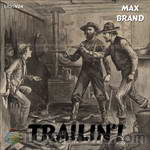 Trailin'!
Trailin'!
“Max Brand”, the most used pseudonym of Frederick Schiller Faust (1892-1944), is best known today for his western fiction. Faust began in the early twentieth century selling his stories to the pulp magazines, writing in many genres under numerous pseudonyms. He is probably best known as the creator of the character Destry. His novel Destry Rides Again has been filmed several times, most notably the 1939 version starring James Stewart and Marlene Dietrich. Also his character Dr. Kildare which was popularized in film and on television earned him a fortune... | |
 Ronicky Doone
Ronicky Doone
Frederick Schiller Faust (1892-1944), is best known today for his western fiction. Faust was born in Seattle, Washington and at an early age moved with his parents to the San Joaquin Valley in California where he worked as a ranchhand. After a failed attempt to enlist in the Great War in 1917 and with the help of Mark Twain’s sister he met Robert Hobart Davis, editor of All-Story Weekly and became a regular contributor writting under his most used pseudonym “Max Brand”. He wrote in many genres during his career and produced more than 300 western novels and stories... | |
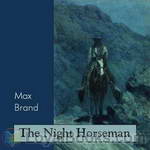 The Night Horseman
The Night Horseman
A man, a dog, and a horse. The call of the wild geese. A very smart doctor from the east who finds there is a lot to learn from these desert people. A woman loved by three men. A gunslinger who has a debt to settle. Max Brand brings them all together in another one of his over three hundred exciting western tales. Brand is not your typical western writer. | |
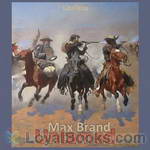 The Untamed
The Untamed
Whistlin' Dan Berry is one of the most interesting characters in Western fiction. With uncanny abilities he controls a wild stallion, appropriately named Satan, and a ferocious wolf dog, Black Bart. Easy going, Berry proves absolutely unforgiving when physically assaulted by a feared, vicious outlaw, Jim Silent. Seemingly without any emotions, Whistlin' Dan is relentless in his vengeful search for Silent and his outlaw gang. The is the first book in the "Whistlin Dan" series. (Introduction by rkilmer) | |
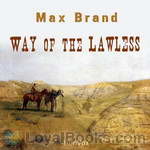 Way Of The Lawless
Way Of The Lawless
Young Andrew Lanning made one mistake in the beginning, and now the most feared lawman in the mountain desert, Hal Dozier, is on his trail and will stop at nothing to bring the outlaw Lanning to justice. But is Andrew guilty of all the things he is being accused of? There is one, a pretty young girl, who doesn't believe all she hears about him. Again, Max Brand shows us why he is the master of the pulp western. (Introduction by Richard Kilmer) | |
 The Seventh Man
The Seventh Man
The Seventh Man by Max Brand, tells part of the story of the larger-than-life western character, Dan Barry, known as “Whistling Dan,” and his alter-ego companions, Black Bart, the wolf-dog, and Satan, the indomitable black stallion. It’s also the story of Kate Cumberland and the incredible five-year-old daughter of Kate and Dan, Joan. We first see Dan as a gentle, caring man with a deep sense of fairness. But then, after six years of a peaceful life in their mountain cabin Dan, more feral than human, sets out to revenge an injustice by killing seven men... | |
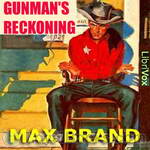 Gunman's Reckoning
Gunman's Reckoning
A typical early 20th century western. It's a tale of a tough guy who gets involved with an evil man with an angel daughter for whom the tough guy falls. His efforts to recover hers and her father's gold mine claims is the story. Not a lot of shoot em up but enough story to make one want to finish the book to see how things work out. (Introduction by Charles Montgomery) | |
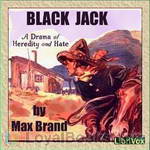 Black Jack
Black Jack
The son of a notorious outlaw is adopted into a wealthy, law-abiding family as an infant after his father is killed in an attempted robbery. Will he follow in the footsteps of his outlaw father or will his life be guided by the respectable woman who nurtured him to manhood? Another exciting tale by the master of the pulp western, Max Brand. | |
By: Max Heindel (1865-1918) | |
|---|---|
 The Rosicrucian Mysteries
The Rosicrucian Mysteries
A primer for those interested in the basic philosophy, beliefs & secrets of the Rosicrucians. | |
By: May Agnes Fleming (1840-1880) | |
|---|---|
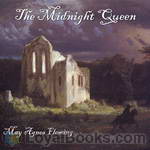 The Midnight Queen
The Midnight Queen
May Agnes Fleming is renowned as Canada's first best-selling novelist. She wrote 42 novels, many of which have only been published posthumely.The Midnight Queen is set in London, in the year of the plague 1665. Sir Norman Kingsley visits the soothsayer "La Masque" who shows him the vision of a beautiful young lady. Falling madly in love with her, he is astonished to find her only a short time later and saves her from being buried alive. He takes her home to care for her, but while he fetches a doctor, she disappears. Sir Kingsley and his friend Ormistan embark on an adventure to solve the mystery of the young lady - will they ever find her again? | |
By: May Sinclair (1863-1946) | |
|---|---|
 Audrey Craven
Audrey Craven
In May Sinclair’s remarkable first novel, Audrey Craven is a beautiful young woman who has by her idiosyncracies acquired a thoroughly undeserved reputation for originality. In fact, Audrey is a shallow, selfish, malleable person of negligible intelligence, with a fastidious horror of anyone who might be considered a nobody. Her pursuit of the stimulation of extraordinary minds (and her persistent fantasy of being somebody’s Muse) brings her into contact with serious women and men representing the profoundest passions of art, religion, science, and love... | |
 Two Sides of a Question
Two Sides of a Question
Here are two gemlike novellas in one volume, written in May Sinclair’s clearest and cleverest prose and exploring the many ways in which a woman can be held captive, held back from the “intoxication of freedom.” In “The Cosmopolitan,” Frida Tancred is a wealthy heiress trapped by family obligation in a dismal provincial estate, hopelessly longing to see all the glories of the world and with no way of escape but the conventional one of marriage. In “Superseded,” spinsterish Miss Juliana Quincey has been teaching arithmetic in a London girls’ school for twenty-five years when she suddenly falls in love with a much younger man and begins to question the assumptions of her life... | |
 Combined Maze
Combined Maze
Ranny Ransome is an idealistic young man, devoted to exuberant gymnastic exercises and to fighting “flabbiness” in his own life, body and soul. He loves the girlish and athletic Winny Dymond, and particularly loves participating with her in the Combined Maze, a choreographed, intricate, exhilarating group gymnastic ritual in which the young men and women of the Polytechnic Gymnasium demonstrate their skills. Unfortunately, Ranny falls under the spell of the seductive Violet, a sexual free spirit who wants nothing more than to live an untrammelled life on her own terms... | |
 Tasker Jevons: The Real Story
Tasker Jevons: The Real Story
In this May Sinclair wartime masterpiece, dashing newsman Walter Furnival is an absurdly good catch: handsome, successful, athletic, intelligent, an upstanding epitome of manhood and rectitude. Tasker Jevons is a puny, preposterous, impossible-looking, bombastic sports writer, without one single redeeming social grace. Imagine the jealous mortification of Furny when his enchanting young typist and love interest Viola Thesiger chooses the clownish Jevons as a lover, seeing in him a remarkable inner beauty not evident to anyone but her and (as he grudgingly but magnanimously admits) the long-suffering and devoted Furnival... | |
By: Mayne Reid (1813-1883) | |
|---|---|
 Gwen Wynn - A Romance of the Wye
Gwen Wynn - A Romance of the Wye
Gwendoline Wynn, our heroine, is an orphan-heiress who lives on the river Wye. She will live with aunt until she comes of age and her money. Vivian Ryecroft, our hero and a captain in the Hussars, is on a leave of absence in Herefordshire, salmon fishing on the Wye. Gwen and Vivian have a chance, and brief, encounter on the Wye, and Vivian is enchanted. Will our hero and heroine find love? Will it last? | |
By: Melville Davisson Post (1869-1930) | |
|---|---|
 Dwellers in the Hills
Dwellers in the Hills
Ward was laid up after a mysterious accident when Woodford, a rival cattleman, demanded 600 head be delivered within 3 days under a contract that the two had entered into. The price had since dropped and Woodford was counting on Ward's inability to deliver to escape a loss on the contract. Woodford had chosen his time well. The cattle were far to the south across the Valley River and Ward had no choice but to send his brother, Quiller, to fetch the stock. A lot could happen on such a long trip as Quiller leaves childhood behind and learns lessons he will never forget about the world of men... | |
By: Meredith Nicholson (1866-1947) | |
|---|---|
 The Port of Missing Men
The Port of Missing Men
Shirley Claiborne is fascinated by the tall handsome man named John Armitage who seemed to follow her and her brother, Captain Claiborne, as they traveled around Europe. Count von Stroebel had urged Armitage to do something for Austria. Now von Stroebel was dead – cut down by an assassin’s bullet – and Jules Chauvenet is one step closer to seeing the corrupt and worthless Francis ascend to the throne. When Shirley and Captain Claiborne sail for their home in Washington D.C., Armitage follows them. Monsieur Chauvenet also follows, but is he following Shirley or the mysterious John Armitage? And just who is John Armitage? (Introduction by MaryAnn) | |
By: Metta Victoria Fuller Victor (1831-1885) | |
|---|---|
 Dead Letter
Dead Letter
Published in 1866, "The Dead Letter: An American Romance" written by Metta Victoria Fuller Victor under the pseudonym, Seeley Regester, is credited by historians of popular literature to be the first full-length American crime fiction novel. The writing is melodramatic in places and includes opinions typical of the time period, but is an enjoyable, early example of the genre. The novel begins with Richard Redfield, a clerk in the "Dead Letter Office," opening an unclaimed letter. Upon reading the contents, he is convinced that the message relates to the events of a night two years prior when another young man was brutally murdered. | |
By: Michael Knerr (?-1999) | |
|---|---|
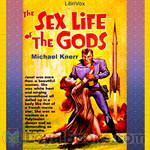 Sex Life of the Gods
Sex Life of the Gods
Beth Danson was about twenty-five and, besides her deep auburn-brown hair and lovely face, she boasted an equally attractive body. He found himself captivated by the warm thrust of her breasts beneath the silk blouse. The clear milk of her flesh, at the “V” of her throat excited him in a strange way. When he thought of her as his wife, it was frightening. It was as though someone had tossed him a woman and expected him to just fall into the routine of marriage. It wouldn’t be hard to come to love this woman, but it would take awhile... | |
By: Michael Shaara (1928-1988) | |
|---|---|
 Conquest Over Time
Conquest Over Time
Pat Travis, a spacer renowned for his luck, is suddenly quite out of it. His job is to beat his competitors to sign newly-Contacted human races to commercial contracts...But what can he do when he finds he's on a planet that consults astrology for literally every major decision - and he has arrived on one of the worst-aspected days in history?Michael Shaara, later to write the Pulitzer-winning novel "The Killer Angels", wrote this story for Fantastic Universe in 1956. | |
By: Michel Eyquem de Montaigne (1533-1592) | |
|---|---|
 Essays, Book 1
Essays, Book 1
Michel Eyquem de Montaigne is one of the most influential writers of the French Renaissance, known for popularising the essay as a literary genre and is popularly thought of as the father of Modern Skepticism. He became famous for his effortless ability to merge serious intellectual speculation with casual anecdotes and autobiography—and his massive volume Essais (translated literally as "Attempts") contains, to this day, some of the most widely influential essays ever written. | |
By: Miguel de Cervantes Saavedra (1547-1616) | |
|---|---|
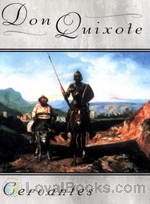 Don Quixote
Don Quixote
This is volume 1 of 2. One of the most quirky, eccentric and endearing heroes to ever be depicted in fiction, the chivalrous Don Quixote is sure to capture hearts while bringing tears of laughter to your eyes. If you've never encountered the Knight from La Mancha before, get set for a delightful sojourn through the Spanish countryside, across the fertile countryside of Central Spain. Don Quixote by Miguel de Cervantes Saavedra was an immediate success when it was first published in 1605 and won huge financial and literary success for its creator, an impoverished writer and poet... | |
 The Exemplary Novels of Miguel de Cervantes Saavedra
The Exemplary Novels of Miguel de Cervantes Saavedra
Originally compiled by Cervantes himself in 1613 as a collection of "exemplary" stories, this translated version from 1881 brings these stories to the English reader. Included in the collection are twelve stories selected by Cervantes, including "A Deceitful Marriage," which famously transitions seamlessly and humorously into the "Dialogue Between Scipio and Berganze". | |
By: Mikhail Saltykov-Shchedrin (1826-1889) | |
|---|---|
 Family of Noblemen
Family of Noblemen
Meet the Golovliovs, the ultimate dysfunctional family. In the difficult transition years before and after the liberation of Russia’s serfs, the Golovliovs are a gentry family ill-equipped to face the adaptations necessary in the new social order. Petty, back-biting, greedy, rigid, ignorant, and cruel, their personalities are captured in the array of nicknames they themselves give each other: The Hag, Little Judas, Simple Simon, Pavel the Sneak, the Orphans, the Blood-Sucker. They hate each other ferociously and utterly despise the peasants around them, who are gradually awakening to the potentialities of their new freedoms... | |
By: Mikhail Yurevich Lermontov (1814-1841) | |
|---|---|
 Hero of Our Time
Hero of Our Time
A Hero of Our Time is indeed a portrait, but not of one man. It is a portrait built up of all our generation's vices in full bloom. You will again tell me that a human being cannot be so wicked, and I will reply that if you can believe in the existence of all the villains of tragedy and romance, why wouldn't believe that there was a Pechorin? If you could admire far more terrifying and repulsive types, why aren't you more merciful to this character, even if it is fictitious? Isn't it because there's more truth in it than you might wish? | |
By: Mildred A. Wirt Benson (1905-2002) | |
|---|---|
 Hoofbeats on the Turnpike
Hoofbeats on the Turnpike
Penny Parker is a teen-aged sleuth and amateur reporter with an uncanny knack for uncovering and solving unusual, sometimes bizarre mysteries. The only daughter of widower Anthony Parker, publisher of the "Riverview Star," Penny has been raised to be self-sufficient, outspoken, innovative, and extraordinarily tenacious. Her cheerful, chatty manner belies a shrewd and keenly observant mind. Penny was the creation of Mildred A. Wirt, who was also the author of the original Nancy Drew series . Wirt became frustrated when she was pushed to "tone down" Nancy Drew and make her less independent and daring... | |
By: Mildred Aldrich (1853-1928) | |
|---|---|
 Told in a French Garden
Told in a French Garden
American friends begin to summer in a beautiful French country house when WWI breaks out. They decide not to evacuate as the war encroaches. Their interactions are interwoven by the stories that they take turns telling after dinner each night to stimulate their nightly conversation and distract their thoughts from the war. | |
By: Miles Franklin | |
|---|---|
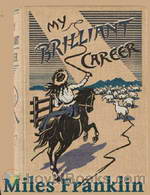 My Brilliant Career
My Brilliant Career
Sybella “There is no plot in this story, because there has been none in my life or in any other life which has come under my notice. I am one of a class, the individuals of which have no time for plots in their life, but have all they can do to get their work done without indulging in such a luxury”. Like the author Miles Franklin, Sybella grows up in the bush, and as her family’s fortunes decline, so her feelings rise that life should hold more for her than the relentless hard physical work farming marginal land in times of drought. | |
By: Miriam Michelson (1870-1942) | |
|---|---|
 In the Bishop's Carriage
In the Bishop's Carriage
Nancy 'Nance' Olden, a young and very pretty woman, is an accomplished liar and thief. Raised in a horrific orphanage, called the Cruelty by its occupants, Nance and her criminal boyfriend, Tom Dorgan, are pulling a con when the book begins. The results of their act propel Nance into a series of events that she could never have imagined. This was Miriam Michelson's first novel and it was considered a 'blockbuster' in its day. Ranked fourth on the list of bestsellers of 1904 by "Publishers Weekly," Michelson's book was a source of controversy due to the dubious ethics and morals of its heroine. | |
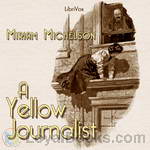 A Yellow Journalist
A Yellow Journalist
Rhoda Massey is a young, sharp reporter for a daily newspaper in San Francisco. After proving herself an astute and fearless investigator on her first big story, she spends most of her waking hours running down leads and doing (almost) anything it takes to produce headline grabbing tales and to be the first one to do so. She must compete with her male colleagues where she works but also with those from other newspapers. Rhoda discovers it useful to be pretty and small in stature (great for eavesdropping from tight and unusual locations) but it's her shrewd mind and her nose for news that propel her to pursue stories in dangerous places and, sometimes, from dangerous characters... | |
By: Mírzá Abu’l-Fadl Gulpáygání (1844-1914) | |
|---|---|
 The Brilliant Proof (Burhäne Lämé) in reply to an attack upon the Bahai Revelation by Peter Z. Easton
The Brilliant Proof (Burhäne Lämé) in reply to an attack upon the Bahai Revelation by Peter Z. Easton
“In these days,” writes the renowned Bahá’í scholar, Mírzá Abu’l-Fadl, “which are the latter days of 1911, A. D. and the early days of 1330 A. H., I have seen a curious article which astonished me. What did I see? I find that one of the missionaries of the Protestant sect, who accounts himself among the learned men of the twentieth century, a helper of the pure religion of Christ and one of the civilized and cultured occidentals, by name, Peter Z. Easton, has been so provoked by jealousy... | |
By: Miss Mulock (1826-1887) | |
|---|---|
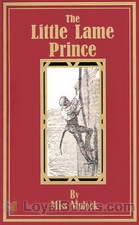 The Little Lame Prince
The Little Lame Prince
Paralyzed in an accident while a baby, young Prince Dolor is imprisoned in a lonely tower by his usurping uncle. He is visited by his mysterious godmother who provides him with magical gifts, including a traveling cloak that allows him to fly across the land. He uses his gifts to return to his rightful place on the throne. Also included are several short stories by the author also featuring princes. (Chapters 12-15) | |
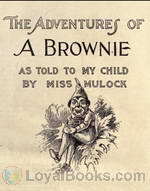 Adventures of a Brownie as Told to My Child
Adventures of a Brownie as Told to My Child
Adventures of a Brownie follows the life of a brownie who lives in a family’s coal cellar and the adventures he gets into with the members of the household. (Written by Ancilla) | |
By: Montague R. James (1862-1936) | |
|---|---|
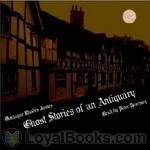 Ghost Stories of an Antiquary
Ghost Stories of an Antiquary
An English tourist in a small, rural town in the South of France discovers an ancient manuscript with a strange illustration on the last page. A young orphan is sent to live with his elderly cousin, a secretive man who is obsessed with immortality. A picture that tells stories that change according to who is viewing it. These and other delicious, goose bump evoking tales are part of Ghost Stories of an Antiquary by Montague R James. A master of his craft, MR James was an academic and administrator of King's College, Cambridge and later of Eton... | |
 The Five Jars
The Five Jars
The Five Jars is the only novel written by James, who is best known for his ghost stories. It is a peculiarly surreal fantasy apparently written for children. While he is out walking, the narrator is drawn to a remote pool, and finds a small box that has been hidden since Roman times. He gradually learns how to use its contents, fighting off a series of attempts to steal it, and becomes aware of a strange world hidden from our own. | |
By: Mór Jókai (1825-1904) | |
|---|---|
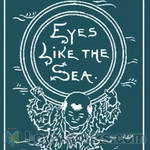 Eyes Like the Sea
Eyes Like the Sea
He was a painter, a poet, a novelist. He lived during the Hungarian revolution and his love of freedom meant his life was often in peril. She was his first love, this girl with the eyes like the sea. She was at heart noble, good and loving. What an excellent lady might have been made out of this woman, if she had only met with a husband who, in the most ordinary acceptance of the word, had been a good fellow, as is really the case with about nine men out of every ten. But she always managed to draw the unlucky tenth out of the urn of destiny... | |
By: Morgan Robertson | |
|---|---|
 Futility, Or the Wreck of the Titan
Futility, Or the Wreck of the Titan
This novel was published a full 14 years before the sinking of the Titanic, but listeners may be surprised at how many parallels this fictional tale has with subsequent true events. The Titan is the largest and most technologically advanced steamship of her time. She is considered unsinkable. Her full speed crossings of the Northern Lane Route carry her rich passengers in the highest standards of luxury and comfort. The less well-off travel in rougher quarters but still benefit from the speed of travel... | |
By: Morgan Scott | |
|---|---|
 Rival Pitchers of Oakdale
Rival Pitchers of Oakdale
Play Ball!!! It's the start of another baseball season at Oakdale Academy. But there is a rivalry brewing between the pitchers. One wants to be a starting pitcher, but he is inconsistent. Another, a new kid from Texas, has been mentored by last year's starter, and is proving to have talent. And don't forget that starting pitcher from last season, he wants to continue to take the rubber for the team. This should prove to be an exciting season for the boys! | |
By: Mrs Charles Bryce (1839-1920) | |
|---|---|
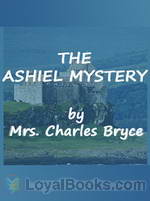 The Ashiel Mystery - A Detective Story
The Ashiel Mystery - A Detective Story
Just as the adopted Juliet Byrne finds out the truth about her family, her father is murdered. Luckily the brilliant chocolate-munching Detective Gimblet takes up the case to solve the 'Ashiel Mystery' | |
By: Mrs. C. M. Livingston | |
|---|---|
 Aunt Hannah and Martha and John
Aunt Hannah and Martha and John
Aunt Hannah's fondest wish had been that her nephew John would marry a local girl and take over the family farm. Trouble was, John was never very interested in the farm and followed his own path, first to college and then to seminary. Now he was settling into his first pastorate and as anyone could see, his wife Mattie was simply not fit to be a housekeeper or a pastor's wife in a country church. If only he had listened to his Aunt Hannah! | |
By: Mrs. Henry de la Pasture (1866-1945) | |
|---|---|
 Lonely Lady of Grosvenor Square
Lonely Lady of Grosvenor Square
Elizabeth de la Pasture, the author of this work, is the mother of the more well known E. M. Delafield- author of Diary Of A Provincial Lady. Jeanne Marney, a country girl, comes to London to care for her ailing aunt. She is lonely and unhappy, yet unable to rebel against the many limitations put upon an upper class woman in turn-of-the-century London. Then she becomes an heiress... Would this be a blessing or a curse? This book has been made into a silent film in 1922. This book would be of interest to fans of Jane Austen, Frances Hodgson Burnet, Henry James, and E. M. Delafield. - Summary by Stav Nisser. | |
By: Mrs. Henry Wood (1814-1887) | |
|---|---|
 East Lynne
East Lynne
Ellen Wood (1814-1887) was an English novelist, better known as Mrs. Henry Wood. She wrote over 30 novels, many of which (especially East Lynne which was a Victorian best seller and is still sometimes performed as a drama) enjoyed remarkable popularity. Lady Isabel Carlyle, a beautiful and refined young woman, leaves her hard-working but neglectful lawyer-husband and her infant children to elope with an aristocratic suitor. After he deserts her, and she bears their illegitimate child, Lady Isabel disguises herself and takes the position of governess in the household of her husband and his new wife". Summary by Wikipedia | |
By: Mrs. Humphry Ward (1851-1920) | |
|---|---|
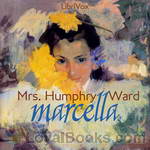 Marcella
Marcella
Mary Augusta Ward was a very popular author at the end of the 19th century. The arrival of Marcella was discussed a lot in the London news papers. This popular novel tells about Marcella Boyce, a beauty of the 1880s, who thinks she truly believes in the values of socialism. A 21-year-old art student, she lives in a boarding house in Kensington until her father inherits Mellor Park, the family estate which is located in the Midlands. She unwillingly leaving her studies, all the things she loves and wants to do, and her friends, and starts her new life at Mellor Park, determined to help the poor people she sees around her... | |
By: Mrs. L. T. Meade (1854-1914) | |
|---|---|
 The Rebel of the School
The Rebel of the School
Kathleen O’Hara is a young pretty girl sent to school in England from Ireland by her father to get a good education, but Kathleen has other ideas. She quickly become friends with the girls of the school who don’t pay for their education and in turn these girls consider Kathleen to be their Queen. What trouble will Kathleen and her friends get into? And what will the school do with the naughty, “Rebel of the School?” | |
By: Mrs. O. F. Walton (1849-1939) | |
|---|---|
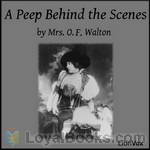 A Peep Behind the Scenes
A Peep Behind the Scenes
Rosalie is the daughter of a traveling theater master and is envied by many young girls as she appears to live a life full of glamour, glitz, and glory. But beneath the happy smiling face is a hurting heart, a deep sorrow for her dying mother, and a wretched life. Follow Rosalie as she learns of the Good Shepherd who loves and cares for her, and begins to trust Him for daily strength. | |
 Christie's Old Organ
Christie's Old Organ
Christie is all alone in the world after his mother dies. He lives in a boarding house and every night creeps up the attic stairs to hear an old barrel organ play. One night while he is listening, the organ stops and Christie hears a thump. What has happened? What should Christie do? | |
 Poppy's Presents
Poppy's Presents
One day, Poppy gets told her mother has a present for her. But the neighbors laugh and say there is such a thing as too much of a good thing. What is the present? | |
By: Murray Leinster (1896-1975) | |
|---|---|
 The Aliens
The Aliens
This story starts with space ships scouring the universe in an interplanetary game of tag. The humans know there are “Aliens” out there. But so do the Aliens. As each tries desperately to make the phenomenal discovery, they secretly hope that the other will not turn out to be the enemy. Humans call them “Plumies” because of the feathery plumes they inscribe on silicon-bronze tablets and cairns they have left behind on their intergalactic travels over the last thousand years. The search goes on, till one day somewhere in outer space, a Plumie ship collides with the one manned by humans... | |
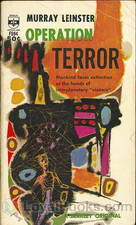 Operation Terror
Operation Terror
An unidentified space ship lands in a Colorado lake. Equipped with a paralyzing ray weapon, the creatures begin taking human prisoners. A loan land surveyor and a journalist are trapped inside the Army cordon, which is helpless against the mysterious enemy. Can they stop the aliens before it is too late? | |
 Space Tug
Space Tug
Joe Kenmore heard the airlock close with a sickening wheeze and then a clank. In desperation he turned toward Haney. “My God, we’ve been locked out!” Through the transparent domes of their space helmets, Joe could see a look of horror and disbelief pass across Haney’s face. But it was true! Joe and his crew were locked out of the Space Platform. Four thousand miles below circled the Earth. Under Joe’s feet rested the solid steel hull of his home in outer space. But without tools there was no hope of getting back inside. Joe looked at his oxygen meter. It registered thirty minutes to live. | |
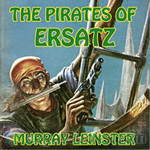 The Pirates of Ersatz
The Pirates of Ersatz
Bron is the offspring of infamous space pirates but instead of following in the family footsteps he decides to become an electronic engineer. Unfortunately, every time he tries to get out, something pulls him back in. This is a tongue-in-cheek space adventure along the lines of the Stainless Steel Rat by Harry Harrison. It was originally published in the FEB-APR issues of Astounding Science Fiction in 1959. | |
 The Mad Planet
The Mad Planet
It is 30,000 years following dramatically changed climate conditions on earth which had let massive amounts of carbon dioxide belch from the interior of the planet into the atmosphere. Over the millenia this would have quite devastating effects on life as it had once been known. Much of the human and animal population would not survive the climate change, and indeed those few humans who did survive knew nothing of all which their predecessors had learned and built. Indeed, they knew not even of their existence... | |
 This World Is Taboo
This World Is Taboo
Calhoun is an Interstellar Medical Serviceman, and he's needed on Dara. Trouble is: Dara is forbidden. Taboo. And breaking quarantine will make Calhoun a presumed plague-carrier and subject to being shot on sight by anyone from Weald. But hey! If he did the smart thing, we wouldn't have a story!But why are men from Dara shooting at him? | |
 Talents, Incorporated
Talents, Incorporated
Bors felt as if he'd been hit over the head. This was ridiculous! He'd planned and carried out the destruction of that warship because the information of its existence and location was verified by a magnetometer.But, if he'd known how the information had been obtained--if he'd known it had been guessed at by a discharged spaceport employee, and a paranoid personality, and a man who used a hazel twig or something similar--if he'd known that, he'd never have dreamed of accepting it. He'd have dismissed it flatly! | |
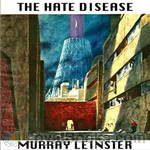 The Hate Disease
The Hate Disease
Dr. Calhoun and his pet tormal Murgatroyd work for the Interstellar Medical Service making routine public health inspections on far-flung colonial planets. When they reach Tallien Three they are greeted with a rocket attack by the Paras, a mutated form of human rapidly replacing the “normals”. The normals think it’s a pandemic of demonic possession but Calhoun has his doubts. If he can keep from turning into a Para, or being assassinated by them he just might figure this thing out. – The Hate Disease was first published in the August 1963 edition of Analog Science Fact and Fiction magazine. | |
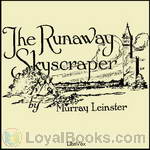 The Runaway Skyscraper
The Runaway Skyscraper
Arthur Chamberlain has problems. His one-man engineering firm is faltering and his pretty secretary Estelle barely notices him. But these problems are put aside when his Manhattan office building falls into the fourth dimension. Madison Square is filled with wigwams and it’s up to Arthur to engineer a way to make his building to fall back to the future. – The Runaway Skyscraper first appeared in the February 22, 1919 issue of Argosy magazine. | |
 Operation: Outer Space
Operation: Outer Space
Jed Cochrane is about to take off on man's first interstellar voyage. His mission: Make sure it's good television! (Introduction by Mark Nelson) | |
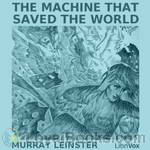 The Machine that Saved the World
The Machine that Saved the World
They were broadcasts from nowhere--sinister emanations flooding in from space--smashing any receiver that picked them up. What defense could Earth devise against science such as this? In the far future of 1972, on a secret military installation, Staff Sergeant Bellews is an expert on the latest scientific discovery: a way for ordinary machines like vacuums and lawnmowers to gather experience in their jobs, becoming error free over time. Then the strange broadcasts began to blow up transmitters everywhere. Were they from space? Enemies? the future? He didn't care until they started messin' with his machines. Then he took it personally. (summary from the first chapter and Phil Chenevert) | |
 The Ambulance Made Two Trips
The Ambulance Made Two Trips
Big Jake Connors is taking over his town through violence, inimidation and bribery but Detective Sergeant Fitzgerald can only grind his teeth in frustration. The gangsters seem to have everything going their way until the day that a little dry cleaning establishment declines their offer of 'protection' and strange things start to happen. Murray Leinster gives us another wonderful product of 'what if' from his limitless imagination to enjoy in this gem of a story. Listen and smile. | |
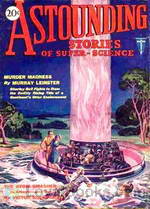 Murder Madness
Murder Madness
Murder Madness! Seven Secret Service men had completely disappeared. Another had been found a screaming, homicidal maniac, whose fingers writhed like snakes. So Bell, of the secret "Trade," plunges into South America after The Master--the mighty, unknown octopus of power whose diabolical poison threatens a continent! | |
 Tanks
Tanks
Tanks and the future of war is what Murray Leinster speculates about in this story. Written in the 1920's he observed the terrible new inventions that were used in World War I to kill people, armored tanks and poisoned gas and then tells us how war will be fought in the future. In this case the war will occur in 1932 and be between the US and the 'Yellow enemy'. It was published in the very first issue of Astounding Stories of Super Science, January 1930. It is science fiction in the sense that it guesses what the future will hold for man based on developing the technology that was coming into being at the time, the 1920's... | |
 Forgotten Planet
Forgotten Planet
The "forgotten" planet had been seeded for life, first with microbes and later with plants and insects. A third expedition, intended to complete the seeding with animals, never occurred. Over the millennia the insects and plants grew to gigantic sizes. The action of the novel describes the fight for survival by descendants of a crashed spaceship as they battle wolf-sized ants, flies the size of chickens, and gigantic flying wasps. | |